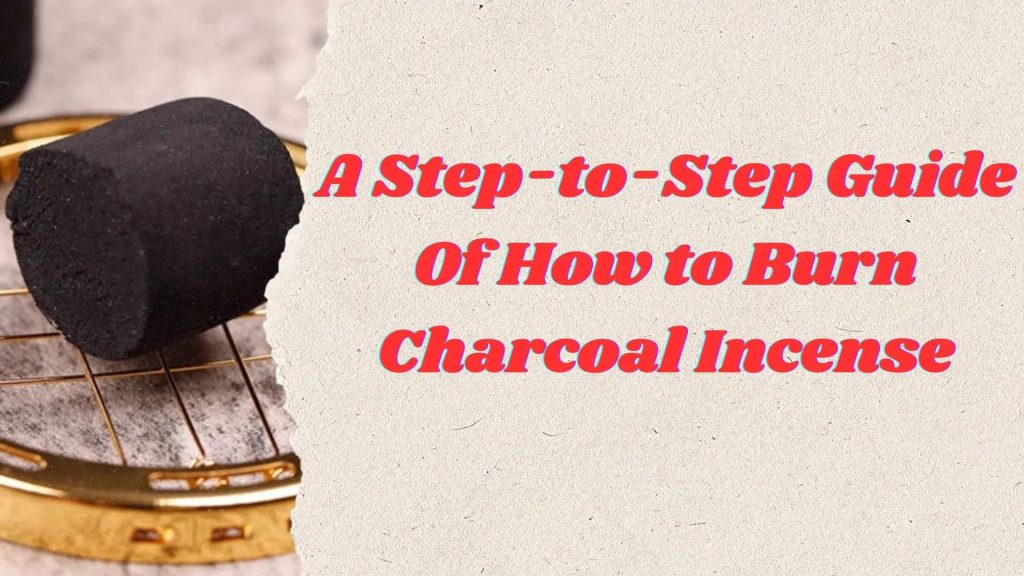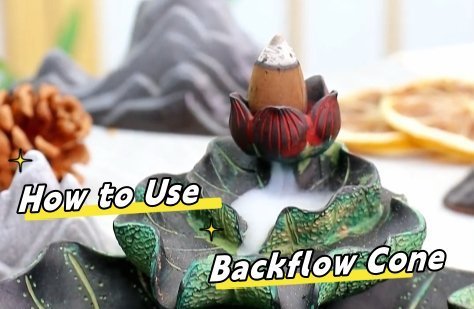For many people, the first time they heard of “a stick of time” is from Episode A Stick of Time From Shogun. However, this term “stick of time” is quite familar to the Chinese and Japanese incense lovers. The term “stick of time” has an intriguing blend of cultural, metaphorical, and contextual meanings. In this article, we’ll delve into its various interpretations, its historical and modern significance, and how it relates to phrases like “an incense stick of time” and its connection to the popular “Shogun stick of time” queries
The Origin of "A Stick of Time"
To understand what is a stick of time, you have to understand its origin. The following is a detailed intro of this term’s origin:
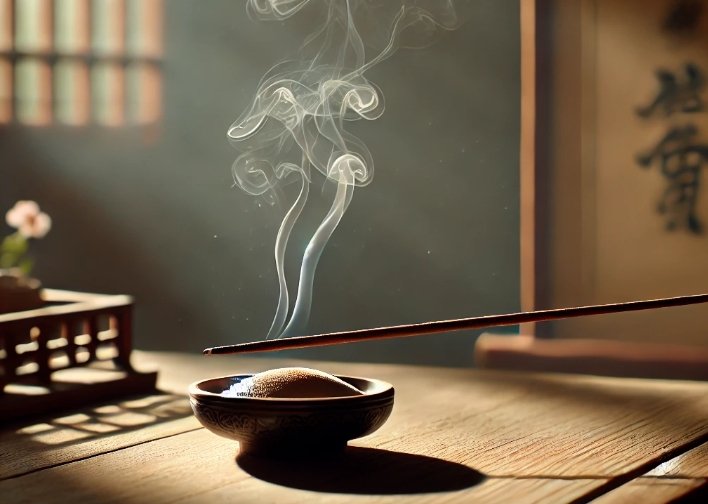
Burning Incense as Ancient Time Measurement
The origins of the phrase “stick of time” are deeply tied to the ancient practice of using incense sticks to measure time. Long before mechanical clocks became commonplace, people in various cultures relied on the consistent burning rate of incense to mark short intervals of time. This method was practical, spiritual, and symbolic, blending functionality with ritual.
In China, the term “一炷香时间” (yī zhù xiāng shíjiān), which translates to “the time it takes for an incense stick to burn,” became a standard unit of time in many aspects of daily life. Depending on the length and material of the incense, this period typically lasted 15 to 30 minutes.
When it comes to the meaning of stick of time in Japanese culture, a stick of time “線香一本の時” also means the time it takes for an incense sticks to burn. In Japan, the use of incense (kō) is equally significant and steeped in tradition. The practice of burning incense to measure time emerged during Zen Buddhist practices, where incense played a crucial role in rituals and meditation. In Japan:
- Zen Buddhism and Meditation: Monks used incense sticks to mark the length of meditation sessions, creating a connection between the physical burning of the incense and the mental focus required during zazen (sitting meditation).
- Tea Ceremonies and Rituals: Incense was often burned during the traditional Japanese tea ceremony (chanoyu), symbolizing mindfulness and serving as a subtle timer for the flow of the gathering.
- Martial Arts Training: Similar to China, Japanese martial artists would often train for “one stick of incense’s time,” using the steady burning of the stick to cultivate discipline and focus.
Why "A Stick of Time" Became Time Measurement?
So why it has to be a stick of time in ancient Chinese and Japanese culture and traditions? The use of an incense stick as a time measurement tool emerged due to its practicality, availability, and cultural significance. Here’s why it became so effective:
Consistent Burning Rate: Incense sticks burn at a steady and predictable pace, typically lasting 15–30 minutes, depending on their length and material. This made them a reliable tool for tracking short intervals of time.
Accessibility: Incense was widely available in ancient China and Japan, commonly used in households, temples, and rituals. Its dual role as a sacred object and a practical timer made it highly versatile.
Integration with Rituals: Incense burning was already central to meditation, religious ceremonies, and martial arts training. Timing activities with the burning incense added a spiritual dimension, turning timekeeping into a mindful practice.
Symbolism of Impermanence: The gradual burning of incense symbolized the fleeting nature of time and life, aligning with Buddhist and Taoist philosophies. This made it both a practical and philosophical tool.
Simplicity and Portability: Unlike sundials or water clocks, incense sticks were portable, worked indoors, and required no special equipment, making them an ideal timekeeper in various settings.
How the Concept "An Incense Stick of Time" Evolved?
While the literal use of incense as a timekeeper diminished with the advent of clocks, the metaphorical significance of “a stick of time” has endured. In both Chinese and Japanese traditions, the burning incense stick became a profound symbol of time’s fleeting nature and the importance of living intentionally. Whether marking meditation, rituals, or martial arts, it served as a reminder to cherish the present moment and use time wisely.
Today, the phrase “stick of time” draws on these ancient practices, representing not only a specific duration of time but also a deeper reflection on the transience of life and the value of mindfulness
What Is the Meaning of a Stick of Time Today?
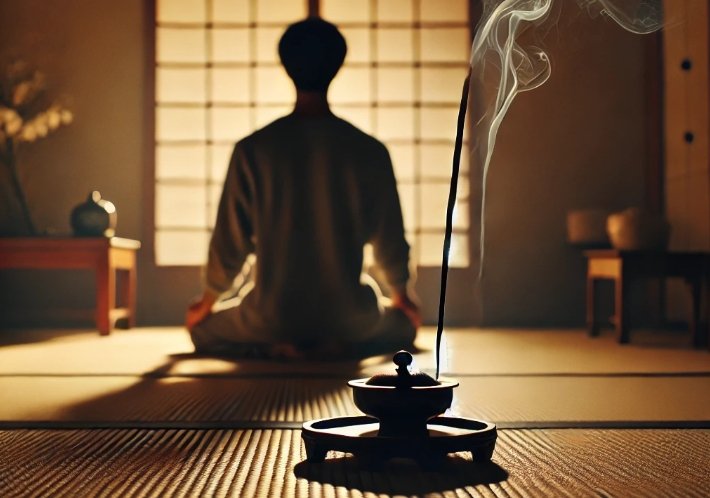
In modern usage, the phrase “incense stick of time” has evolved from its ancient roots to take on both literal and metaphorical meanings. While it still carries echoes of its historical use as a tool for measuring time, it has grown into a concept that emphasizes mindfulness, focus, and purposeful action in daily life.
1. A Short but Meaningful Duration
The phrase often refers to dedicating a small, focused amount of time to a specific activity, such as introspection, meditation, or even completing a task. This interpretation mirrors the ancient use of incense sticks, which provided a structured timeframe for mindful activities like prayer, meditation, or training. Spending “a stick of time” today might mean:
- Taking 15–30 minutes to meditate or reflect.
- Engaging in a brief yet meaningful conversation or task.
- Allocating intentional time for mental clarity and focus.
2. A Measured Period for Tasks
Beyond introspection, the phrase is also used figuratively to describe any purposeful block of time devoted to an activity. It reflects the value of being intentional with time, inspired by the deliberate nature of measuring time through incense. Whether it’s dedicating time to work on a project, train, or unwind, “a stick of time” symbolizes mindful engagement and productivity.
In both interpretations, “a stick of time” today serves as a reminder to approach time with thoughtfulness, making even small durations of time meaningful and impactful
Deep Spiritual Meanings of An Incense Stick of Time
Incense sticks were far more than a practical way to measure time in ancient China and Japan—they held deep cultural, spiritual, and philosophical significance. Their use went beyond the functional and became a symbol of mindfulness, impermanence, and the transience of life itself.
1. Mindfulness and Reflection
The slow, steady burning of an incense stick naturally encourages focus and introspection. As the stick burns, it creates a calming atmosphere, often accompanied by a soothing fragrance, which helps individuals center themselves. This made incense an essential part of activities that required deep concentration, such as:
- Meditation: Monks and practitioners in both Zen Buddhism and Chinese traditions would use the burning of incense as a way to remain focused on their breath or mantra during meditation. The scent and visible smoke acted as gentle reminders to stay present in the moment.
- Rituals and Ceremonies: Incense burning was commonly incorporated into religious rituals, such as prayer, ancestor worship, and offerings. Its slow burn signified reverence and encouraged participants to pause and reflect.
- Martial Arts Training: In both Chinese and Japanese martial arts, training sessions timed by an incense stick cultivated discipline and focus, as practitioners were required to dedicate their full attention for the duration of the burn.
The act of watching incense burn was inherently meditative. It taught patience and encouraged individuals to embrace the timelessness of the present moment, fostering an awareness of the here and now.
2. Symbolism of Time
The burning of an incense stick is often regarded as a metaphor for the fleeting nature of time. Just as the stick gradually diminishes and its fragrance dissipates into the air, so too does life. This symbolism is deeply rooted in Buddhist and Taoist philosophy, which emphasize impermanence and the transient quality of existence.
- Life’s Ephemerality: The incense stick serves as a visual representation of how time steadily passes, reminding individuals to make the most of each moment before it slips away.
- Connection Between Time and Mortality: The gradual reduction of the incense parallels the human experience, from the vigor of youth to the eventual fading of life. It acts as a humble reminder of mortality and the importance of living with purpose.
- Harmony with Nature: The smoke of incense rising into the air mirrors the idea of returning to the natural cycle of life. It symbolizes the fleeting yet beautiful essence of existence, much like how the fragrance lingers briefly before fading away.
So How Long Is A Stick Of Time?
The answer to “how long is a stick of time?” varies depending on its context, with its origins deeply tied to the historical use of incense sticks as natural timers. While rooted in tradition, the phrase has taken on both literal and metaphorical meanings in modern times, offering flexibility in its interpretation
1. Traditional Incense Stick
Historically, a “stick of time” referred to the burning duration of a single incense stick, commonly used in China and Japan as a timer for activities such as meditation, martial arts practice, or rituals. The actual time depended on several factors:
- Length: Longer incense sticks could burn closer to 30 minutes, while shorter ones lasted about 15 minutes.
- Material: The type of incense used—whether thick, slow-burning herbal blends or lighter, faster-burning materials—affected the burn rate.
This practical use gave rise to the understanding of a “stick of time” as a unit of 15–30 minutes, a manageable yet meaningful block of time for focus and intention.
2. Half an Incense Stick of Time
When less time was needed, practitioners often burned only part of the stick, measuring what we now call “half a stick of time.” This shorter period, roughly 7–15 minutes, was especially useful for brief activities like quick meditations, concise rituals, or shorter practice sessions.
The idea of halving an incense stick reflects the flexibility of this time measurement, allowing for practical adjustments based on the activity or need.
3. Modern Interpretations
Today, “a stick of time” is rarely tied to literal incense burning and instead is used metaphorically to represent a short, focused duration of time. Its meaning varies based on context but retains the same spirit of mindful intention. Modern interpretations include:
- Personal Productivity: Setting aside “a stick of time” for a task, such as reading, journaling, or working on a project, can translate to a meaningful time block of 15–30 minutes or even longer.
- Mindfulness Practices: Even without incense, the phrase can symbolize a short but impactful meditation session, stretching routine, or deep breathing exercise.
- Flexible Metaphorical Use: In informal speech, “a stick of time” can simply mean any finite, purposeful time period, whether a few minutes or an hour, depending on the context
Stick of Time Meaning in Shōgun

In the context of the Shōgun episode titled “A Stick of Time”, the concept of the “stick of time” serves as a metaphorical and cultural device to underline themes of timing, patience, and impermanence. The phrase draws from the traditional Japanese and Chinese use of incense sticks as a natural timer, with its meaning in the episode linked to the critical decisions and political dynamics at play during a specific meeting or event. Here’s a deeper look at its significance
The Meaning of “A Stick of Time” in Shōgun
A Measured Duration for Critical Deliberations
- In Shōgun, the “stick of time meeting” refers to a gathering where discussions and negotiations take place within the limited period of time it takes for an incense stick to burn. This practice is rooted in Eastern traditions where incense burning serves as a ritualized way of managing time.
- By framing the meeting around the burning of an incense stick, the participants are subtly reminded of the fleeting nature of time and the need to act decisively yet thoughtfully. It emphasizes that decisions must be made before the incense burns out, creating a sense of urgency and focus.
A Symbol of Mindfulness and Patience
- The incense stick as a timer reflects the Japanese cultural value of mindfulness and the importance of being deliberate in thought and action. In the context of the meeting, it conveys that the participants must not only respect the limited time but also approach the discussions with clarity and intention.
- This reinforces the idea that timing is everything, whether in diplomacy, alliances, or conflict resolution.
A Reminder of Impermanence
- The gradual burning of the incense stick mirrors the impermanence of life and opportunities—a key theme throughout Shōgun. The meeting itself is a reminder that the political dynamics and relationships in feudal Japan are fragile and subject to change. Just as the incense will inevitably burn out, so too will the moment for negotiation or action
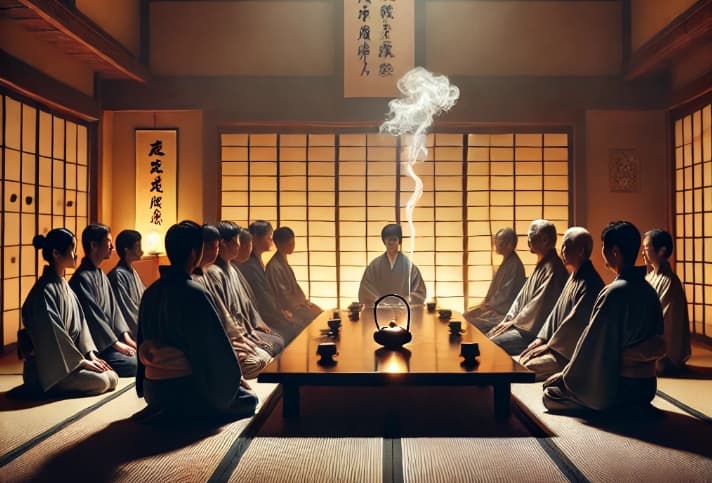
What Was the Point of the Stick of Time Meeting?
For viewers who wonder what was the point of the stick of time meeting in Shogun, here the “stick of time meeting” was likely designed to:
- Encourage Efficiency: By limiting the time to the burning of a single incense stick, the meeting avoided drawn-out deliberations and ensured the participants stayed focused and concise.
- Highlight the Importance of Timing: The use of the incense stick underscored that timing is crucial in making decisions. Participants needed to act within the finite time allotted, mirroring the political urgency of their situation.
- Symbolize Cultural Traditions: The meeting framed around the incense stick reflects the Japanese way of emphasizing harmony, balance, and respect for time. It demonstrates how cultural practices influenced decision-making processes in feudal Japan
Conclusion
The phrase “a stick of time” carries a rich blend of cultural, historical, and metaphorical meanings that have evolved over centuries. Rooted in the ancient practice of using incense sticks to measure time, it symbolizes mindfulness, impermanence, and intentionality—concepts deeply tied to Eastern traditions. Whether in ancient rituals, martial arts training, or meditation, the “stick of time” was a practical and symbolic tool that encouraged people to approach time with purpose and reflection
Frequently Asked Questions About Sticks of Time
What is the meaning of "a stick of time"?
The phrase “a stick of time” originates from the ancient use of incense sticks to measure time. It symbolizes a short, meaningful duration of time, often used for mindfulness, rituals, or focused activities. Today, it can be used both literally and metaphorically to describe any finite period dedicated to a specific purpose
How long is a "stick of time"?
The length of a “stick of time” depends on its context:
- Traditional Incense Stick: Typically lasts 15–30 minutes, depending on its size and material.
- Half a Stick of Time: Roughly 7–15 minutes.
- Modern Interpretation: It is often used metaphorically to refer to any purposeful or focused block of time, not necessarily tied to incense burning
What is the "stick of time meeting" in Shōgun?
In Shōgun, the “stick of time meeting” refers to a gathering where discussions and decisions are framed within the time it takes for an incense stick to burn. This reflects themes of urgency, timing, and mindfulness, reminding participants of the impermanence of opportunities and the need for deliberate, focused action
What is Chinese incense stick time?
In Chinese tradition, incense stick time refers to the duration it takes for an incense stick to burn completely. Known as “一炷香时间” (yī zhù xiāng shíjiān), this unit of time typically lasts between 15 to 30 minutes, depending on the length and thickness of the incense. It was historically used as a natural timer in daily life and rituals
Why was incense used to measure time in China?
Incense was widely available and burned at a steady, consistent rate, making it an effective natural timer. Additionally, its use carried cultural and spiritual significance, symbolizing mindfulness, focus, and impermanence. The burning incense also created a calming atmosphere, adding a meditative dimension to timekeeping
What Is a Japanese Incense Stick of Time?
A Japanese ” incense stick of time” or “線香一本の時”refers to the practice of using an incense stick (kō) to measure time in traditional Japanese culture. Similar to the Chinese concept of “一炷香时间” (the time of one incense stick), the burning of incense in Japan symbolized finite intervals of time and carried deep spiritual, cultural, and practical significance. It was often associated with rituals, meditation, tea ceremonies, and martial arts
What Is A Stick of Time Spiritual Meaning?
Spiritually, a “stick of time” symbolizes impermanence, mindfulness, and the connection between the physical and spiritual realms. As an incense stick burns, it represents the fleeting nature of time and life, reminding us to cherish each moment. The rising smoke is seen as a bridge to the divine, carrying intentions, prayers, or thoughts, while also purifying the space. It promotes balance, focus, and presence, offering a finite period for meditation or reflection. Ultimately, the burning incense reflects life’s journey—from beginning to end—and urges us to live intentionally, embracing the beauty of each passing moment. To learn more, you can read our articles how many incense to burn? and Understand The Meaning of Incense Smoke




